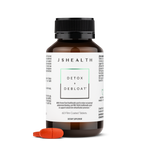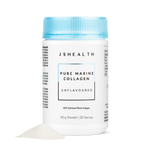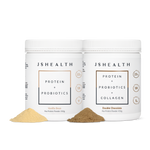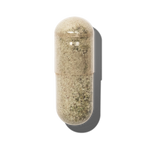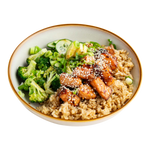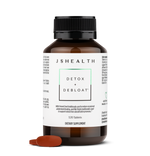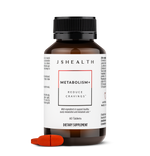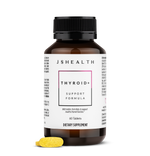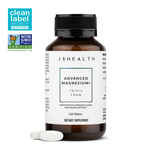25% OFF SUBSCRIPTIONS!*
5 Foods That Cause Bloating + What To Eat Instead
Abdominal bloating can be extremely uncomfortable and often painful too. For many, bloating can feel much like having your stomach swell up, causing varying degrees of distension that can be both physically and psychologically difficult to deal with. Unfortunately, abdominal pain and discomfort are common.
In many cases, abdominal bloating is caused by excess gas within the gastrointestinal or digestive tract. However, the build-up of intestinal gas isn’t the only culprit. Bloating is closely linked to what we eat as well.
Here, we explore some of the most common foods that can cause gas and bloating, plus take a look at alternatives to help you find relief from bloating in your digestive system.
What Is Bloating?
Our digestive system is complex. It is composed of hollow organs like the stomach, small intestine, large intestine, colon, and more. Digestive wellness and caring for your gut are certainly an area that needs special attention when it comes to your health.
The truth is, the state of our digestive health can affect multiple areas of our bodies, for better or worse. For example, immune system health is closely tied to our digestive health. The gut houses the majority of our immune cells.
Bloating is one digestive symptom that can cause serious discomfort and even pain for many people. This symptom is actually very common. Bloating affects nearly one in seven adults in the United States every week. Of this 14 percent of people, women tend to experience bloating symptoms in higher numbers.
There are numerous causes of abdominal bloating. For example, digestive conditions, which impact around 70 million people in the United States, can contribute to bloating symptoms. These include digestive issues like chronic constipation, irritable bowel syndrome (IBS), and chronic medical conditions like Crohn’s disease and celiac disease.
Some Common Causes of Bloating
Abdominal bloating can be triggered in numerous ways, from simple ingestion and gas to more chronic digestive disorders. Furthermore, symptoms can vary in severity from person to person.
Intestinal gas is the most common cause of bloating. This occurs when excess intestinal gas (methane, hydrogen, nitrogen, oxygen, and carbon dioxide) is trapped within the intestinal tract. In many cases, intestinal gas is produced by the digestion of carbohydrates by the gut bacteria through fermentation.
Carbonated beverages, eating food too fast, and chewing gum can all contribute to intestinal gas. In most cases, bloating caused by intestinal gas is removed through burping and flatulence.
In addition to gas build-up, other common causes of bloating include:
- Indigestion, also called dyspepsia, can cause stomach pain, bloating, and more. Indigestion can be caused by eating certain foods, eating too much too quickly, and taking certain medications.
- Stomach infections like the rotavirus or norovirus can cause issues like bloating. Bacterial stomach infections can do the same.
- Digestive problems like constipation can contribute to bloating, as can bowel blockages and motility issues like gastroparesis.
- Functional gastrointestinal (GI) disorders and chronic digestive disorders can cause bloating. These include disorders like IBS, Crohn’s disease, ulcerative colitis, and more.
- Aside from cramping, period bloating is common for many individuals experiencing hormonal changes during premenstrual syndrome (PMS).
Food Intolerance and Bloating
Aside from intestinal gas, food intolerance is one of the biggest culprits of bloating. Also known as food sensitivity, food intolerance simply refers to the difficulty the body has when digesting certain foods or “tolerating” them.
Common food intolerances include sensitivities to dairy products, also called lactose intolerance. These products can include milk, cheese, yogurts, and more. Lactose intolerance occurs when people don’t produce enough lactase enzymes to break down lactose.
Gluten is another common intolerance for many people. Gluten is a protein found in rye, wheat, and barley. This is one reason why gluten-free foods are more and more common.
In addition, some experience intolerances to histamines found in certain foods, such as cheeses and wine. In these cases, people do not have enough diamine oxidase enzymes to break down the histamines in foods.
5 Foods That Cause Bloating and What To Eat Instead
In addition to specific food intolerance, certain foods have been known to trigger symptoms of bloating. Let’s look at some of the most common food culprits that can contribute to bloating and some alternatives to help beat the bloating.
1. Carbonated Drinks
Most of us have experienced the after-effects of guzzling down a carbonated drink. As the bubbles in the can move down into your stomach, the carbon dioxide in the bubbles can cause feelings of bloatedness. This is why carbonated drinks tend to make you burp — a lot.
In addition to the extra fizz, most carbonated drinks (sodas) are filled with added sugars, artificial flavors and sugar alcohols.
Try this instead:
Instead of reaching for a carbonated soda, reach for the water. Water can help keep you feeling fuller without the added belching effects. Experiment with adding fruit and mint to infuse your water naturally. If you reach for carbonated drinks, try seltzer waters instead to avoid the added sugars.
2. Beans, Lentils, and Legumes
Beans, lentils, and legumes are widely known for being gas-causing foods. While they can make a great source of plant protein, they’re also loaded with soluble fiber and carbs. More specifically, beans are full of short-chain sugars called oligosaccharides. These belong to a group of carbs known as FODMAPs — fermentable oligosaccharides, disaccharides, monosaccharides and polyols.
This high fiber content is admirable, but it is not easily digested. This is why some high-fiber foods like beans and legumes can cause digestive symptoms like gas and bloating.
Try this instead:
If beans, lentils, and legumes are causing bloating issues, opting for more easily digestible beans could help. These include black-eyed peas, mung beans and adzuki beans.
Quinoa is also an alternative. In some cases, soaking beans and legumes before cooking them can help reduce the bloating effects of oligosaccharides.
3. Dairy Products
According to health statistics, roughly three-quarters of people eventually lose their ability to tolerate lactose, a disaccharide sugar found in dairy products. Medically, this is known as lactose intolerance. In short, this occurs when the body cannot produce enough lactase (dietary enzyme) to break down lactose.
These dairy products include milk, cheese, yogurts, butter, cream cheese, ice cream and more. In addition to bloating, lactose intolerance causes digestive issues like gas, diarrhea and cramping.
Try this instead:
Thankfully, there are plenty of options for those with lactose intolerance. In addition to lactose-free milk, cheeses, and ice creams, alternative dairy products include:
- Almond milk
- Soy milk
- Rice milk
- Flax milk
- Oat milk
- Coconut milk
4. Cruciferous Vegetables and Some Fruits
The health benefits associated with cruciferous veggies are seemingly endless. These healthy foods are packed with fiber and essential vitamins. However, these nutrient-dense vegetables also tend to be tough on the tummy.
Many of them are part of the FODMAPs family. Cruciferous vegetables include:
- Brussels sprouts
- Cauliflower
- Broccoli
- Cabbage
- Garden cress
- Collard greens
- Kale
Unfortunately, those with digestive disorders like IBS often need to limit or avoid cruciferous vegetables since they cause digestive issues like bloating and gas. Other vegetables like onions and garlic can also cause bloating thanks to fructan, a soluble fiber.
Certain fruits can also exacerbate bloating symptoms; these include fruits high in fructose, such as pears and apples.
Try this instead:
Avoiding these foods completely is not the answer for most people. While many love to eat these vegetables raw, when it comes to cruciferous vegetables cooking them could help you avoid issues of bloating by making them easier to digest.
But, if you’re looking for cruciferous veggie alternatives, you can try:
- Spinach
- Zucchini
- Ginger
- Celery
- Carrots
- Asparagus
- Cucumbers
5. Wheat, Rye and Barley
As mentioned above, sensitivities to the gluten found in wheat, rye and barley are very common. Gluten is found in many foods, including pasta, bread and numerous baked goods.
Whole grains like wheat and cereal grains like rye and barley are high in insoluble fiber, but they can also wreak havoc on the digestive system for some people. Bloating is a common symptom.
Try this instead:
Thankfully, there are alternatives to these grains. Oats are one example that is typically offered as an alternative to whole grains. More easily digestible alternatives include:
- Buckwheat
- Wild rice
- Quinoa
- Almond flour
The Bottom Line
Bloating is an uncomfortable digestive symptom that affects millions of people every day. The root cause of bloating can range from intestinal gas to food intolerances. In fact, many foods can lead to digestive issues, from bloating and beyond.
Thankfully, each of these common bloat-causing foods does have alternatives. In addition to our Probiotic for digestive support, our Detox + Debloat formula is also made to help relieve abdominal bloating and support the body’s natural detoxification process.
Sources:
The Gut: Where Bacteria and Immune System Meet | Hopkins Medicine
Understanding Bloating and Distension | IFFGD
Digestive Diseases Statistics for the United States | NIDDK
Lactose intolerance: from diagnosis to correct management | NIH
